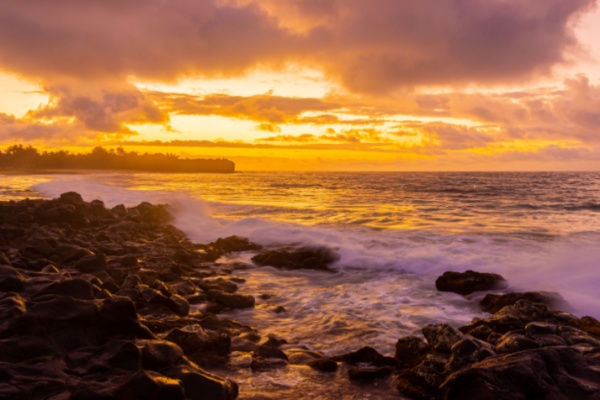The eastern and central Pacific have come to life recently with multiple tropical features brewing since last week, including one named storm. However, while Tropical Storm Gilma does not pose a threat to land, a vigorous feature farther west may soon be the next tropical storm and could wander close to Hawaii, AccuWeather meteorologists warn.
The tropical wave of low pressure located just over 1,000 miles southeast of Hawaii has been assigned a high risk of developing into a tropical depression or tropical storm early this week. Because this system could affect Hawaii, meteorologists have begun to refer to it as a tropical wind and rainstorm to raise public awareness of the potentially serious nature of the feature. The next name on the official list of tropical storms for the eastern Pacific is Hector.
“This feature will take a general west-northwest path that will bring it closer and closer to Hawaii into this weekend,” AccuWeather Lead Hurricane Expert Alex DaSilva said. The exact track and intensity of the feature will determine impacts in Hawaii. Swells will build ahead of the system later this week and they may be followed by increasing winds and squalls, should the system approach from the southeast, DaSilva said.
Much of the Hawaiian Islands is experiencing conditions ranging from abnormally dry soil and brush to extreme drought. While tourists and the vacation industry may dislike any soaking rain, from a drought standpoint it would be welcomed. “In terms of kicking up strong dry winds that can enhance the wildfire risk, a fully developed tropical storm or hurricane passing just to the south of the islands but not bringing rain would be a worst-case scenario,” DaSilva said.
Last August, powerful Hurricane Dora passed well south of the islands while strong high pressure hovered to the north. The combined circulation of both systems created stiff east-northeast winds that knocked down trees and down power lines, and triggered rapidly spreading and deadly wildfires.
“Even a less-intense tropical storm or depression that moves directly toward the islands will raise some dry winds in advance of moisture and showers and thunderstorms,” AccuWeather Senior Meteorologist Brett Anderson said, “Then once the feature’s moisture overspreads the islands, the risk of wildfires would diminish due to the wet landscape, regardless of wind intensity.”
Other dangers associated with a tropical depression or storm directly passing over part of the island chain include storm surge flooding and coastal erosion to flooding rainfall with debris flows and road washouts.
Direct hits by Tropical Storms and Hurricanes are Rare in Hawaii. Olivia was the last tropical storm to make landfall in Hawaii in September 2018. Prior to reaching Hawaii as a weakening tropical storm, Olivia had reached Category 4 intensity on the Saffir-Simpson wind scale for hurricanes. The hardest hit by flooding, rain and wind from Olivia was Maui. Olivia was the first tropical cyclone to make landfall on Maui and Lanai in recorded history.
During the prior month in 2018, Hawaii had a close encounter with a Category 5 hurricane named Lane. Fortunately, Lane weakened substantially and never made landfall in the islands. Prior to Hawaii’s greatest natural disaster, which Dora contributed to last August, Iniki from September 1992 was the costliest hurricane. As a Category 4 hurricane, Iniki caused $3.1 billion in damage (1992 dollars) as it struck the island of Kauai.
—
Photo Credit: Billy McDonald / Shutterstock.com
